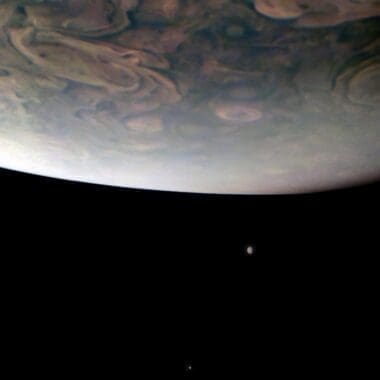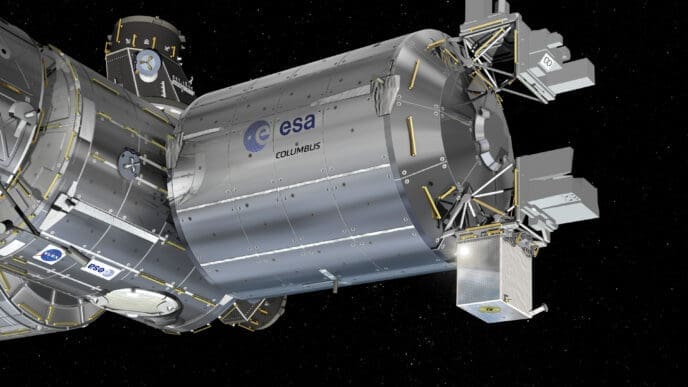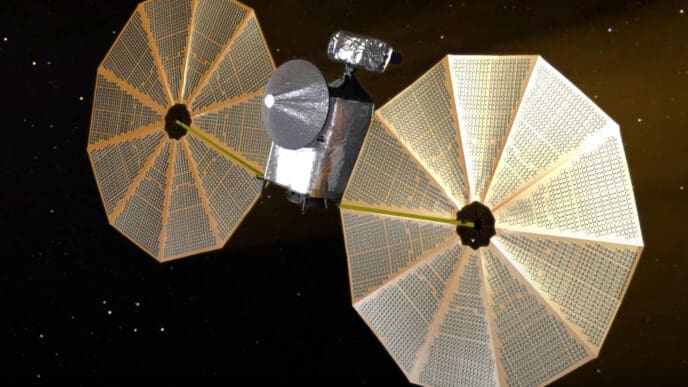During the month of December, Jupiter stands out as one of the most remarkable celestial objects visible in the night sky, offering an unparalleled opportunity for observation.
Jupiter, often referred to as the “King of Planets,” is not only the largest planet in our solar system but also one of the brightest objects visible from Earth. Its massive size and reflective cloud tops make it easily identifiable to stargazers. Despite being over 365 million miles away at its closest approach to Earth, Jupiter can shine brighter than most celestial bodies, surpassed only by the Moon, Venus, and occasionally Mars.
The planet’s enormous mass, greater than the combined mass of all other planets in the solar system, shapes the trajectories of innumerable comets and asteroids. This gravitational influence was evident in 1994 when fragments of Comet Shoemaker-Levy 9 collided with Jupiter, creating impact marks observable from Earth.
Jupiter’s fascinating features include its banded cloud tops and its collection of moons, or “Galilean moons,” which are visible with modest astronomical equipment. These moons—Io, Europa, Ganymede, and Callisto—were discovered over 400 years ago by Galileo and continue to intrigue modern observers. With binoculars, one can often spot these moons as star-like points near Jupiter, while a telescope reveals more details, including the planet’s cloud bands and, occasionally, its Great Red Spot.
In December, Jupiter can be spotted near Aldebaran, the bright star in the Taurus constellation. Observers can use binoculars or a small telescope to enhance their view of Jupiter and its moons. This proximity to prominent celestial landmarks makes December an ideal time for skywatching enthusiasts to engage in observational activities.
NASA’s Juno mission has been pivotal in furthering our understanding of Jupiter since it entered the planet’s orbit in 2016. Over the years, Juno has provided vital data about Jupiter’s internal structure and atmosphere, as well as its moons. As the mission extends, new insights will likely emerge, especially with the upcoming Europa Clipper mission in the 2030s set to explore Jupiter’s intriguing moon Europa.
The Galilean moons offer a rewarding observation project for amateur astronomers. By sketching the positions of these moons over several nights, observers can track their orbital paths around Jupiter. This activity not only enhances observational skills but also deepens appreciation for the dynamic interplay of celestial mechanics.
Jupiter remains a captivating focus for both amateur and professional astronomers. Its visibility in the night sky throughout December offers an excellent opportunity to explore the intricacies of this gas giant and its moons, continuing the legacy of astronomical discovery that dates back to Galileo.
Source: Science.Nasa












